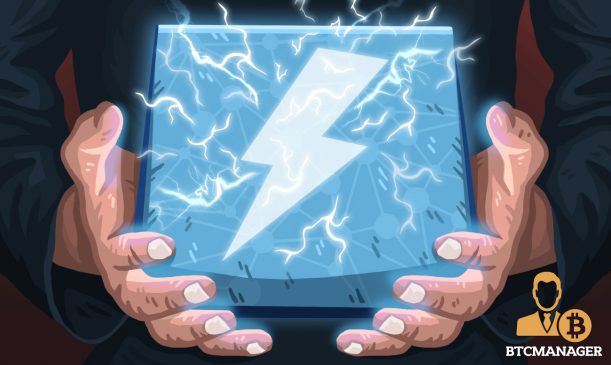In laymen’s terms, the Lightning Network (LN) is a protocol built on top of the Bitcoin, Litecoin, and Monero blockchains; these protocols are called “layer two protocols” because they run on top of an existing network.
By moving away from the main chain, layer two protocols help the overall network experience less latency as it utilizes its consensus tools and can delay the need to be verified on the main chain. This improves the speed of transactions and ultimately leads to adding more users who can continue to use the network efficiently.
The consensus tool on Lightning is a smart contract called a Hash Time Lock Contract (HTLC). This is a contract split into two parts; the hash lock and the time lock. The agreements allow users to safely transfer bitcoin to another person on the Lightning Network through a channel provider. Successful execution of these contracts leads to a recipient receiving funds in a trustless manner and the issuance of a Lightning invoice.
Positive Points on the Lightning Network
The layer two protocol has many advantages over the main Bitcoin chain. Because LN is is much faster than on-chain transactions, it is aimed to become a network that facilitates a large number of small value transactions.
While many complain of the high fees on the Bitcoin network, Lightning significantly reduces that despite adding on a small price for the channel provider. This is a result of not requiring immediate block confirmation of a transaction, as this is done only when a channel is closed.
Since transactions over a Lightning channel are confirmed on a block only when the channel is closed, transactions over LN have intrinsic privacy-enhancing features. Despite channel providers acting as middlemen, Lightning transactions are, for the most part, trustless. This does bring up the question of how consensus is possible in such a scenario.
Think of 100 students in a classroom taking lecture notes. Their job is to go home and individually upload their notes on a college-wide database. In this scenario, observers trust most students are honest participants, and only a minority will willingly submit incorrect information to the database. This is a form of Byzantine Fault Tolerance (BFT) where we rely on the accuracy of honest participants by believing that if a minimum 67 percent of all students submit identical notes, it must be accurate.
Coming back to the Lightning Network, this analogy informs that to disrupt the integrity of the network, 67 percent of the system would need to be malicious actors. Ultimately, this means the very channel providers of the Lightning Network would need to be mal-incentivized for such an event to occur.
This is a far-fetched scenario as the parties with “skin in the game” are unlikely to be the ones trying to end the “game.”
Drawbacks of Lightning and Layer Two
While the Bitcoin community is continuously highlighting the bright side of scaling with the Lightning Network, there is an equal number of negative aspects.
The most basic of the negative aspects is the liquidity constraint; when a channel provider facilitates a transaction for 15 BTC, the channel must already have 15 BTC of liquidity. To couple with this, the ROI of running a channel is incredibly low compared to a deposit on BlockFi, MakerDAO, or any other form of staking.
This means a channel must have the liquidity to run, and even when the channel has it, the return on those funds, which could have been deployed in a more profitable avenue, are incredibly low. This is a direct contradiction to the argument that on-chain fees must be higher to incentivize miners to contribute more hash power in securing the network.
Peter Rizun, the Chief Scientist of Bitcoin Unlimited and an advocate of Bitcoin Cash, offered an extremely simplified explanation for the Lightning Network.
Despite his obvious bias, many who side with LN and Bitcoin found his description to be very helpful, barring a few minor technicalities. To summarize the article, the Lightning Network works like beads on a string; for a bead to be sent from one end of the string to the other end, it has to go through all the channels in between. As a result, the efficacy of a channels payments is solely dependent on how well connected they are to other LN nodes. In some cases, a node is unable to establish a connection to the node they wish to pay and are forced to transact on-chain with high Bitcoin fees.
Hash Time Lock Contracts (HTLC) are the method of enforcing trustless transactions over the network. They allow users to transfer value from one another using intermediaries who do not hold direct custody of funds in the process. But these contracts have a huge drawback; any amounts set under the dust limit are exchanged in a trustless manner. The reason for this is because when a transaction amount is lower than the network fee, it cannot be added as a third output on the transaction.
After receiving the hash generated from the password the receiver sends, the sender puts the amount into the channels fee bucket and promises to pull it out and give it to the channel after receiving confirmation that the receiver got their money. The channel provider then puts the same amount in the receivers fee bucket, promising to take it out and give it to the recipient if they provide the hash password.
Once the hash password is given the channel can prove it transferred the BTC to the recipient and the sender takes their money out of the fee bucket and gives it to the channel; the channel promptly does the same for the recipient.
But at the end of the operation, the channel that received their payment is not obligated by the network to pass it on to the recipient. While they cannot benefit from it (as it’s in the miner’s fee bucket) they can deprive the recipient of their funds – the lack of incentives is what keeps this from happening in the current scenario.
The fear of this mechanism comes from a situation far in the future when BTC fees inevitably rise due to excess demand over supply for block space. This means if fees were hypothetically $10, the dust limit is anything under $10, meaning it is not an economically viable transaction as fees are higher than the actual amount. This, of course, is currently not a big issue, so the liquidity constraint and semi-custodial nature of the network are the most significant drawbacks at current.
Technology Expansion and Commitment to Improvement
From a practical standpoint, the benefits of Lightning outweigh the negative aspects of the network. No technology is perfect, but the commitment shown to scaling and improving Lightning Network are worthy of plaudits.
Christian Decker, a researcher at Blockstream, very eloquently, described the problems with LN and the way the development team aims to overcome these hurdles. In a recent episode of Peter McCormack’s podcast, What Bitcoin Did, Decker gave listeners an outlay of what’s to come for LN, and it is nothing short of insightful.
Lightning Network is neither as functional as Blockstream and Bitcoin proponents claim it is, nor is it as flawed as the other factions point out. With few significant obstacles to overcome and a clear path forward, the Lightning Network has turned into one of the most exciting projects on the Bitcoin blockchain.
Like BTCMANAGER? Send us a tip!
Our Bitcoin Address: 3AbQrAyRsdM5NX5BQh8qWYePEpGjCYLCy4



